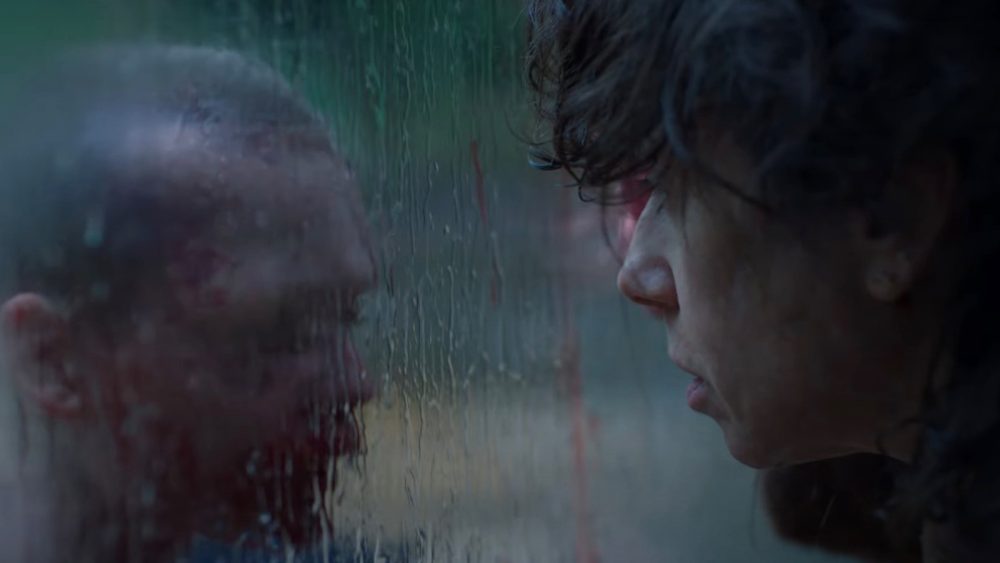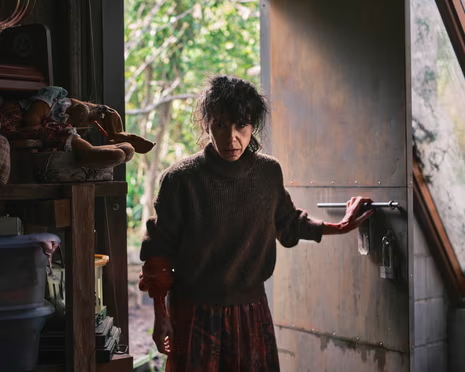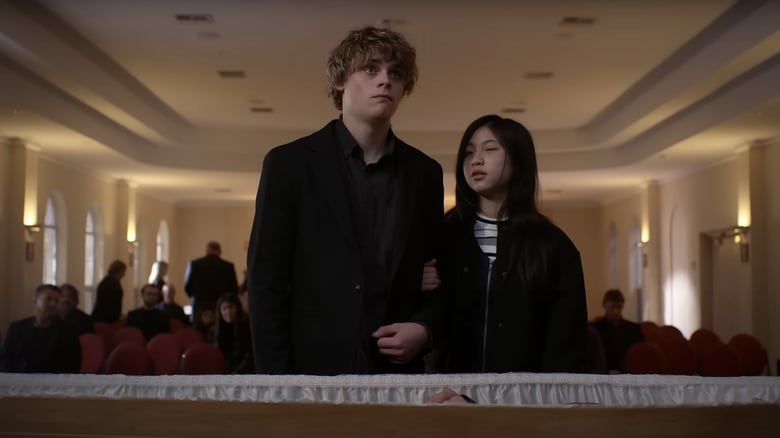In horror, few things are as terrifying as a grieving parent. Examples abound, and they all point to the extremes mothers and fathers will go either to resurrect their dead children or to avenge their untimely deaths. Pamela Vorhees (Betsey Palmer) from Friday the 13th, Sophia Howard (Catherine Walker) from A Dark Song, and Ed Harley (Lance Henriksen) from Pumpkinhead are but some of the most memorable because of the degree of darkness they invited in to do right by their children. Now, the Philippou Brothers have added a new parent to the grief horror support group with their new film Bring Her Back, and her methods are so insidious that they put her near the top of that category. Her name is simply Laura, and she has a possessed child at the ready for a resurrection ritual that’ll scar your mind once you see the cost it incurs.
Bring Her Back follows Andy (Billy Barratt) and Piper (Sora Wong) as they fall under the care of a highly eccentric foster parent called Laura (Sally Hawkins) after their dad dies by an apparent slip and fall in the shower. Andy and Piper are inseparable step-siblings, with the former being very protective of the later because of her visual impairment. Laura is clearly taken by Piper, immediately making it obvious she would’ve preferred Andy had not been a part of the package. The dynamic owes much to Laura’s own struggles with loss. Her daughter died in a drowning accident, a fact we’re made aware of early on.

Once in their new home, the step-siblings find there’s a little boy already living there, an odd and quiet kid with a blank stare and a shaved head called Oliver (Jonah Wren Phillips). He exhibits a strange hunger that results in some of the most gruesome parts of the story, and his role in it is as frightening as it is tragic. Laura tends to be anxious around him, something that Andy picks up on quick. Once everyone’s settled, the foster mom starts enacting her terrible agenda as the kids try to adjust to their new life.
The movie largely focuses on the subtle yet increasingly tense clashes between Andy and Laura as it relates to Piper. Andy stands on the protective brother side of things while Laura operates from a place of desperation and grief fueled by the loss of her daughter. Oliver is the wild card. He moves around the house like a quiet animal, biding his time till he’s allowed to feed. This setup lets the Philippous dissect each character with surgical precision, digging into the traumas that haunt them and the fractured sense of morality that governs them.
It’s obvious Bring Her Back is a complex, messy, and painful exercise in character development. This means the movie lives and dies by its performances. Fortunately, they’re all stellar. Billy Barratt, for instance, does an amazing job as Andy, mainly because he doesn’t fall victim to the cliché of becoming a rage-filled teen as instances of violence and deceit become more severe. Instead, Barratt embraces his character’s vulnerability and uses it to portray him as a scared kid that knows he has to keep calm if he has any chance of keeping his sister safe. He’s believable in his concern, which is something that can help audiences find some hope in all the despair.
It’s Sally Hawkins, though, who takes command of the film in the performances department. Her transformation into Laura brings with it a kind of sadness that paints her cruelty in a way that’s not easy to dismiss as just pure evil. Hawkins embodies a personality that’s odd, goofy, anxious, grief-stricken, and mad all at the same time, and each of these character traits are present in almost every scene she’s in.

The Philippous are careful not to paint her as another ‘evil mother’ type. Laura wants her daughter back. Her actions are obsessively aimed at that, but they’re wrapped up in so much sadness and so much suffering that it actually inspires a twisted kind of sympathy that keeps her from being a villain with a capital V.
That’s not to say she isn’t terrifying. Laura oppresses Andy at every turn to delegitimize him in front of Piper. Thing is, she does it all with a smile. There’s one scene, which takes place in the funeral home where the step-sibling’s father is being observed, where Laura forces Andy to kiss his father’s corpse goodbye. She’s adamant, telling him he’ll regret it if he doesn’t do it. You see Laura at her most evil here, and all without the need to resort to a deep voice to come off as more menacing or to get more intensely physical to get the point across. It’s her presence, her ability to manipulate people in a way that makes it seem like the things she asks for are well within reason.
Say what you will about all the macabre scenes involving Oliver later on in the movie, and they are incredibly macabre, but it’s this scene where the movie anchors its brand of terror. It’s manipulative and malicious and it reveals a lot about who Laura is and what she’s willing to do. Laura cements her place in the Horror Parents Hall of Fame with this scene.
There’s one important criticism to be made of the movie, and it revolves around a problem the horror genre has been contending with for a while now. Like Talk To Me before it (the Philippous’ debut film) and many other now-termed ‘A24’ horror films, the movie is about one thing and thing only: grief. Granted, it’s one of the best treatments of it in recent years, but there’s just not much left to talk about after the story closes because of how blunt it is with its messaging. A bit of nuance could’ve gone a long way, especially as it pertains to the movie’s closing moments. Something gets lost in the end because of this one-track mindset. It doesn’t ruin the movie by any means, but it does limit it in terms of scope.

Bring Her Back is an excruciatingly painful and emotional experience that excavates well below the surface to find things that will certainly shock in surprising ways. Sally Hawkins is in large part responsible for this. She creates a character that almost makes you agree with the things she’s done for her daughter. Eliciting sympathy despite all the ugliness she authors is no easy task, and yet this is exactly what she achieves. The Philippous give Hawkins the space she needs to explore the full range of her emotions, and the movie is all the better for it. Sally Hawkins has given horror another force to be reckoned with in the form of Laura, and she did this by turning her character into the best kind of nightmare: the kind that’s worth revisiting.












